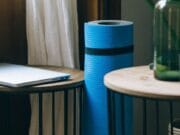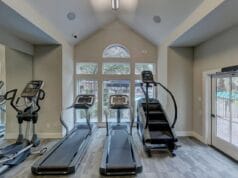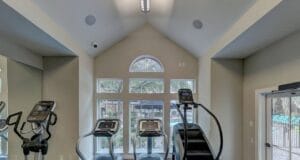Functional Zones in Home Gym Design for Families
Creating a home gym that meets the diverse needs of your family involves thoughtful planning and design. By establishing functional zones within your gym space, you can enhance the workout experience for everyone, from the youngest to the oldest members. This article will guide you through the essential components of a family-kind home gym, including benefits, practical tips, and design ideas.
The Importance of Functional Zones
Functional zones refer to specific areas within your home gym dedicated to distinct activities. Such association not only maximizes the use of space but also promotes efficiency and safety. Here are the key benefits of creating functional zones in your home gym:
- Enhanced Organization: Clearly defined areas help keep equipment and activities organized.
- Improved Safety: Designating specific workout zones reduces the risk of accidents.
- Family Engagement: Family members can enjoy different workout styles without interfering with one another.
Types of Functional Zones
When designing your home gym, consider incorporating the following functional zones:
1. Cardio Zone
This area should house equipment like treadmills, exercise bikes, and ellipticals. It’s frequently preferred for high-energy workouts. Consider position relative to windows to provide a motivating view. For more tips on choosing foldable fitness equipment for small spaces, check out our guide.
2. Strength Training Area
Allocate space for weights, resistance machines, and bodyweight exercise stations. Rubber flooring is ideal for this area to protect against equipment drops. You might also want to explore must-have multi-functional furniture for small home gyms to maximize your space.
3. Flexibility and Recovery Zone
This should include mats for yoga or stretching and foam rollers. A peaceful ambiance with soft lighting makes this area inviting for cooldowns and recovery.
4. Play Zone for Kids
Include an area with fun fitness games or equipment scaled down for kids. This encourages family participation in fitness while keeping the young ones engaged.
5. Multipurpose Zone
This versatile space can adapt for group classes, family workouts, or fun activities like dance. You can use movable equipment to switch up functions easily. Consider repurposing unused corners for fitness in small homes to make the most of your available space.
Design Tips for Functional Zones
To effectively create functional zones in your home gym, consider the following design tips:
- Choosing the Right Space: The garage, basement, or spare room can be ideal. Ensure it has adequate ventilation and lighting.
- Choosing the Right Flooring: Non-slip and shock-absorbent flooring materials like rubber or foam mats provide safety and comfort.
- Ventilation: Open windows and fans help with air circulation. This is particularly importent for high-intensity workouts.
- Smart Storage Solutions: Use shelves and cabinets to keep equipment organized and easily accessible.
Case Study: A family Home Gym Transformation
Consider the Smith family, who transformed their underutilized basement into a dynamic home gym. They divided the space into distinct zones:
| Zone | Equipment | Design features |
|---|---|---|
| Cardio Zone | Treadmill, Stationary Bike | Large windows, motivational posters |
| Strength Zone | Dumbbells, Resistance Bands | Rubber matting, mirrors |
| Flexibility Zone | Yoga Mats, foam Rollers | Calm lighting, plants |
| Kids Zone | Mini Climbing Wall, Balance Beam | Radiant colors, soft flooring |
This family-oriented design encouraged healthy habits among all members, making workouts both fun and engaging.
Practical Tips for Incorporating Functional Zones
Integrate these practical tips to optimize your home gym:
- Survey family preferences: Involve family members in discussing what activities they enjoy most.
- Future-proof your design: Choose equipment that can accommodate all fitness levels, ensuring longevity as family members grow.
- Set goals together: Establish family fitness goals to foster accountability and enthusiasm.
Benefits of a Family-friendly Home Gym
Creating a functional home gym with zones tailored to all family members yields numerous advantages:
- Customizable Experience: Everyone can engage in their preferred workouts simultaneously.
- Healthy lifestyle Habits: Regular exercise encourages family bonding and promotes a healthy lifestyle for everyone.
- Cost-Effective: Avoiding gym memberships saves money while providing convenience.
Final Thoughts
Designing a home gym with functional zones is a strategic approach to meet the varying fitness needs of your family. By creating dedicated areas for cardio, strength training, flexibility, play, and multipurpose activities, you foster an inviting and engaging environment that supports healthy habits for years to come. Embrace the ideas shared in this article to create a well-structured home gym that not only enhances fitness but also strengthens family bonds.






















